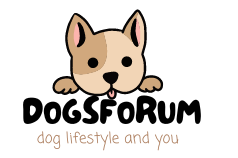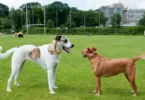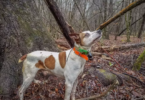As a dog owner, you know that keeping your furry friend clean is essential for their health and your home's freshness. But what do you do when a traditional bath isn't possible or practical? Whether you're dealing with a water-phobic pup, traveling, or simply short on time, there are numerous effective ways to keep your dog clean without resorting to a full bath. This comprehensive guide will explore various waterless cleaning methods, products, and tips to help you maintain your dog's hygiene between baths or when water isn't an option.
Understanding the Need for Waterless Cleaning
Before diving into the techniques, it's important to understand why waterless cleaning can be beneficial:
- Reduces stress for water-averse dogs
- Convenient for quick clean-ups
- Ideal for travel or outdoor adventures
- Useful in cold weather when full baths aren't advisable
- Helps maintain coat health by not over-washing
While these methods aren't permanent replacements for regular bathing, they can significantly extend the time between baths and keep your dog fresh and clean in between.
Dry Shampoo: Your New Best Friend
Dry shampoo for dogs has become increasingly popular, and for good reason. It's an excellent way to freshen up your pup without water.
How to Use Dry Shampoo
- Choose a pet-specific dry shampoo (human products can be harmful)
- Brush your dog thoroughly to remove loose fur and debris
- Apply the dry shampoo according to the product instructions, usually by sprinkling or spraying
- Massage the product into your dog's coat, focusing on oily or smelly areas
- Let it sit for a few minutes to absorb oils and odors
- Brush out the excess powder thoroughly
DIY Dry Shampoo Options
If you prefer a homemade solution, try these natural alternatives:
- Cornstarch: Plain cornstarch can absorb oils and freshen the coat
- Baking soda: Known for its deodorizing properties, it's great for smelly pups
- Oatmeal: Finely ground oatmeal can soothe itchy skin while cleaning
Mix these ingredients in equal parts and apply as you would a commercial dry shampoo.
Wipes: Quick and Easy Clean-up
Pet wipes are a convenient option for spot cleaning or giving your dog a quick once-over.
Choosing the Right Wipes
Look for wipes that are:
- Specifically designed for pets
- Free from harsh chemicals
- Moisturizing to prevent skin dryness
- Large enough to efficiently clean your dog's size
Effective Wiping Techniques
- Start with the dirtiest areas (paws, underbelly, rear end)
- Use gentle, circular motions to clean
- Pay attention to skin folds and hard-to-reach areas
- Use a fresh wipe for the face, being careful around eyes and ears
- Allow your dog's coat to air dry after wiping
Brushing: More Than Just De-tangling
Regular brushing is one of the most underrated cleaning methods. It not only removes loose fur but also distributes natural oils and removes dirt and debris.
Choosing the Right Brush
Different coat types require different brushes:
- Slicker brushes for long-haired or curly-coated breeds
- Bristle brushes for short-haired dogs
- Undercoat rakes for double-coated breeds
- Pin brushes for silky-coated dogs
Effective Brushing Techniques
- Start with a thorough de-shedding using an appropriate tool
- Brush in the direction of hair growth
- Pay extra attention to areas prone to matting (behind ears, under legs)
- Use short, gentle strokes on sensitive areas
- Finish with a soft bristle brush or grooming mitt to distribute oils
Aim to brush your dog at least 2-3 times a week, or daily for long-haired breeds.
Waterless Foam Shampoos: Deep Clean Without the Rinse
Waterless foam shampoos offer a more thorough clean than wipes or dry shampoo, without the need for rinsing.
How to Use Foam Shampoos
- Apply the foam directly to your dog's coat
- Massage it in thoroughly, working from head to tail
- Pay extra attention to dirty or smelly areas
- Allow the foam to dry naturally – it will dissipate into the coat
- Brush your dog thoroughly once the coat is dry
These products often contain conditioning agents, leaving your dog's coat soft and shiny.
Deodorizing Sprays: Freshness in a Bottle
For quick odor control between cleanings, deodorizing sprays can be a lifesaver.
Choosing a Safe Deodorizing Spray
Look for sprays that:
- Are specifically formulated for pets
- Don't contain alcohol or artificial fragrances
- Have natural deodorizing ingredients like enzymes or essential oils
Using Deodorizing Sprays Effectively
- Brush your dog to remove any loose dirt or debris
- Spray lightly over your dog's body, avoiding the face
- Pay extra attention to areas that tend to hold odors (armpits, rear end)
- Allow the coat to air dry
Remember, sprays mask odors rather than clean, so they're best used in conjunction with other cleaning methods.
Spot Cleaning: Targeting Problem Areas
Sometimes, your dog doesn't need a full clean – just attention to specific dirty spots.
Essential Spot Cleaning Tools
Keep these items on hand for quick clean-ups:
- Unscented baby wipes
- Damp microfiber cloths
- Pet-safe stain removers
- Old towels
Common Areas for Spot Cleaning
- Paws: Use a damp cloth to remove dirt and debris after walks
- Face: Gently wipe around the mouth and eyes with a soft, damp cloth
- Ears: Use a pet-safe ear cleaner and cotton balls for the outer ear area
- Rear end: Clean with pet wipes after bathroom breaks if needed
Natural Remedies for Freshening Up
For those who prefer all-natural solutions, several household items can help keep your dog clean and fresh-smelling.
Apple Cider Vinegar Rinse
Create a 50/50 mixture of apple cider vinegar and water in a spray bottle. Lightly mist your dog's coat, avoiding the face. The vinegar smell dissipates as it dries, taking other odors with it.
Coconut Oil Treatment
Coconut oil can help condition the coat and skin while providing a pleasant scent:
- Warm a small amount of coconut oil in your hands
- Gently work it through your dog's coat
- Pay extra attention to dry or itchy areas
- Brush thoroughly to distribute the oil and remove excess
Herbal Sachets
Create small sachets filled with pet-safe herbs like lavender, rosemary, or chamomile. Place these in your dog's bed or near their favorite resting spots to impart a natural, fresh scent.
Paw Cleaning Stations: Preventing Dirt at the Source
Much of the dirt that ends up on your dog comes from their paws. Setting up a paw cleaning station can significantly reduce the need for full-body cleaning.
Creating an Effective Paw Cleaning Station
- Place a shallow tray or basin near your door
- Fill it with a small amount of water or keep a spray bottle nearby
- Keep old towels or a paw cleaning mitt handy
- Train your dog to pause at the station after walks
Quickly rinsing and drying your dog's paws after outings can prevent dirt from spreading through your home and onto your dog's coat.
Grooming Gloves: Cleaning and Bonding
Grooming gloves offer a dual benefit of cleaning your dog while providing a massage-like experience.
Benefits of Grooming Gloves
- Removes loose fur and debris
- Distributes natural oils through the coat
- Provides a gentle, enjoyable experience for your dog
- Allows for easy cleaning of hard-to-reach areas
Using Grooming Gloves Effectively
- Put on the gloves and dampen them slightly if desired
- Pet your dog as you normally would, using gentle pressure
- Pay extra attention to areas that tend to collect dirt or odors
- Use circular motions to work through any tangles or mats
Many dogs who dislike traditional brushing enjoy the feeling of grooming gloves, making it an excellent option for sensitive pups.
Maintaining a Clean Environment
Keeping your dog clean isn't just about their body – their environment plays a crucial role too.
Regular Bed Washing
Wash your dog's bed covers weekly, and the entire bed monthly if possible. For beds that can't be machine washed, use a pet-safe fabric spray and vacuum thoroughly.
Vacuuming and Air Purification
Regular vacuuming, especially with a pet-specific vacuum, can significantly reduce pet odors and dander in your home. Consider using an air purifier with a HEPA filter in areas where your dog spends the most time.
Odor-Absorbing Materials
Place odor-absorbing materials like activated charcoal or baking soda near your dog's favorite spots. These can help neutralize odors between cleanings.
Professional Grooming: When to Seek Help
While these at-home methods are excellent for maintenance, sometimes professional help is needed.
Signs It's Time for Professional Grooming
- Matted fur that you can't safely remove at home
- Overgrown nails that are difficult to trim
- Persistent odors that at-home methods don't resolve
- Skin issues or abnormalities that require expert attention
Regular professional grooming can complement your at-home care routine and ensure your dog stays in top condition.
Tailoring Your Approach to Your Dog's Needs
Remember that every dog is unique, and what works for one may not work for another. Consider your dog's coat type, skin sensitivity, and personal preferences when choosing waterless cleaning methods.
For Short-Haired Dogs
- Focus on regular brushing with a soft bristle brush
- Use pet wipes for quick clean-ups
- Consider a light misting with a deodorizing spray for freshness
For Long-Haired or Double-Coated Dogs
- Prioritize thorough brushing sessions to prevent matting
- Use dry shampoo or waterless foam for deeper cleaning
- Pay extra attention to areas prone to tangling, like behind the ears and under the legs
For Dogs with Sensitive Skin
- Opt for hypoallergenic, fragrance-free cleaning products
- Use natural remedies like oatmeal-based dry shampoos
- Increase brushing frequency to distribute natural oils and remove irritants
By tailoring your approach, you can keep your dog clean, comfortable, and happy, even when a traditional bath isn't an option. Remember, while these waterless methods are excellent for maintenance, they don't completely replace the need for occasional baths. Regular check-ins with your veterinarian can help you determine the best cleaning routine for your unique pup.











Leave a Comment